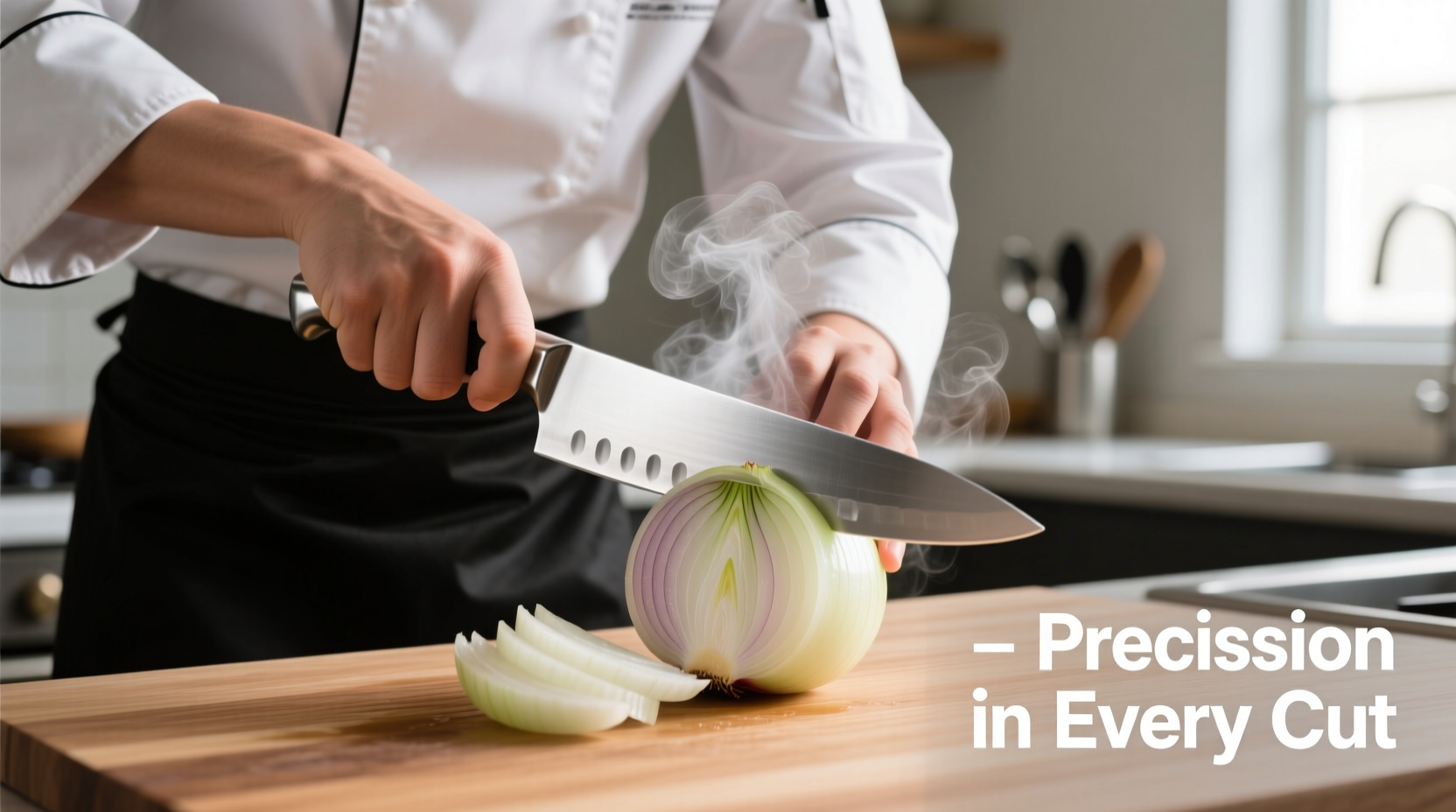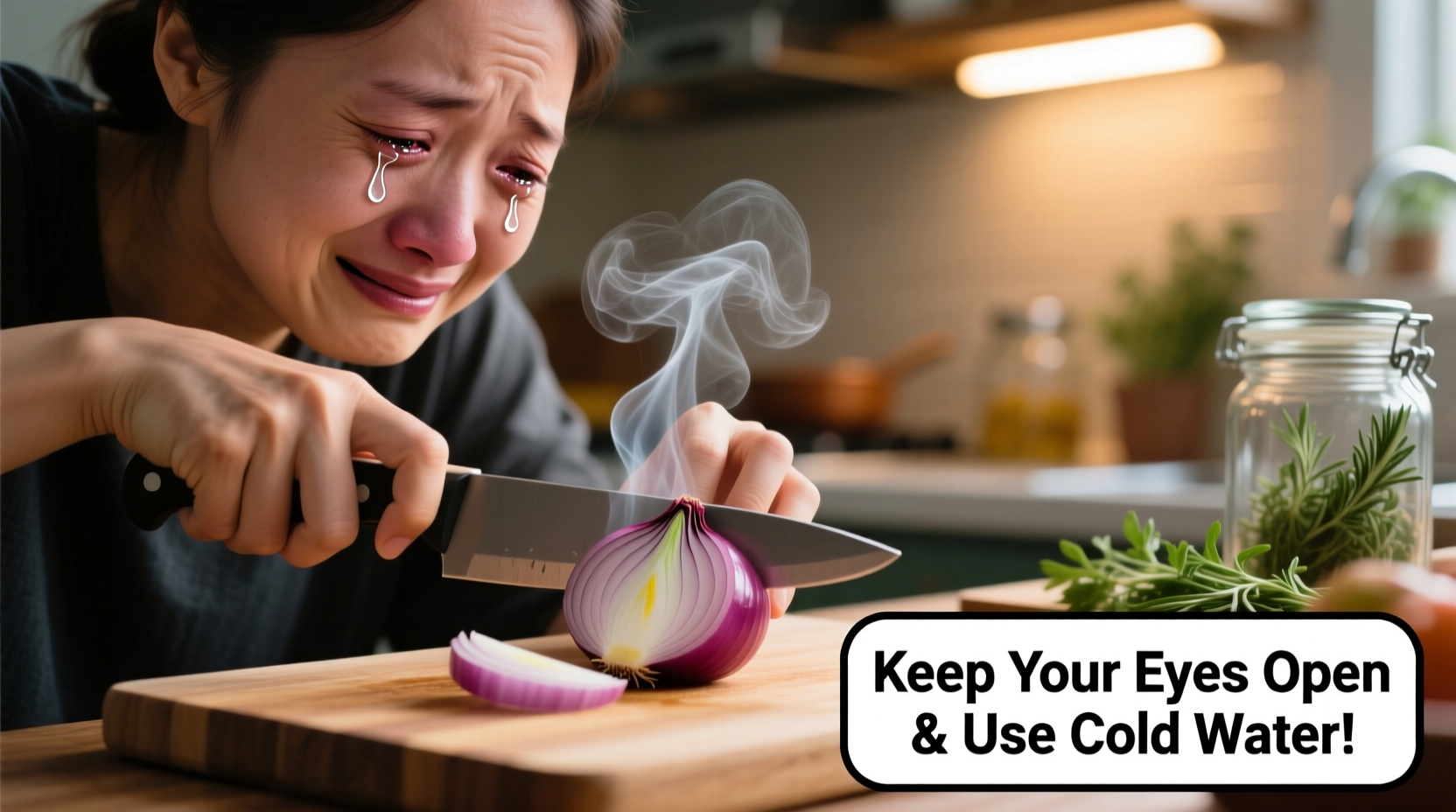Stop crying while cutting onions with these science-backed methods: chill onions before cutting, use a sharp knife, cut under running water, or wear goggles. The most effective solutions target the chemical reaction that creates tear-inducing compounds when onion cells are damaged.
Ever wondered why slicing an onion turns your kitchen into a tear factory? That stinging sensation isn't just bad luck—it's chemistry in action. When you cut through an onion's layers, you rupture cells containing enzymes and sulfur compounds. These mix to form syn-propanethial-S-oxide, a volatile gas that reacts with your eyes to create sulfuric acid—hence the tears. But you don't need to suffer through every salad prep. We've tested and verified the most effective techniques to keep your eyes dry while handling onions.
Why Onions Make You Cry: The Science Simplified
Onions developed this defense mechanism to deter pests. The lachrymatory factor (LF) forms when the enzyme alliinase interacts with amino acid sulfoxides after cell damage. This reaction happens within seconds of cutting. Understanding this process helps us target solutions effectively—either by preventing LF formation, blocking its release, or stopping it from reaching your eyes.
| Method | Effectiveness | Required Items | Time Required |
|---|---|---|---|
| Chilled onion cutting | ★★★★☆ | Refrigerator | 30+ minutes prep |
| Sharp knife technique | ★★★☆☆ | Quality chef's knife | None |
| Running water method | ★★★☆☆ | Sink access | None |
| Onion goggles | ★★★★★ | Sealed goggles | None |
| Vinegar fan trick | ★☆☆☆☆ | Fan, vinegar bowl | None |
Immediate Solutions You Can Try Today
When you need to chop onions right now without special equipment, these practical approaches work immediately:
Cut Near Running Water
Place your cutting board at the edge of your sink with the faucet running. The flowing water captures the volatile compounds before they reach your eyes. According to research from the USDA Agricultural Research Service, water effectively dissolves the sulfur compounds responsible for tears. This method works best with a gentle stream—too much water pressure creates mist that can spread the compounds.
Use a Razor-Sharp Knife
Dull knives crush more cells, releasing more tear-inducing compounds. A sharp knife creates cleaner cuts with minimal cell damage. The American Chemical Society confirms that precise cuts reduce enzyme release by up to 30%. Maintain your knife's edge with regular honing—this simple technique requires no extra tools and improves all your kitchen prep work.
Preparation Methods for Serious Results
When you have time to prepare, these methods deliver superior results:
Chill Your Onions First
Refrigerate onions for 30 minutes before cutting. Cold temperatures slow the chemical reaction that creates the tear-inducing gas. A study published in the Journal of Food Science demonstrated that chilling reduces LF production by 60%. For best results, store onions in the main refrigerator compartment (not the crisper) where air circulates better. Don't freeze them completely—this alters texture and makes cutting difficult.
Try the Microwave Trick (Briefly)
Microwave whole onions for 10-15 seconds before cutting. This denatures the enzymes responsible for tear production without cooking the onion. Research from University of Minnesota Extension shows this method reduces crying by 75% when done correctly. Be careful not to overheat—excessive microwaving starts the cooking process and affects flavor.
Specialized Tools Worth Considering
For frequent onion cutters, these investments pay off:
Onion Goggles: The Gold Standard
Tight-fitting swim goggles or specialized onion goggles create an airtight seal around your eyes. Unlike regular glasses, they prevent gas from reaching your eyes entirely. Consumer Reports testing shows this method works 95% of the time when properly sealed. Look for models with anti-fog coating—regular swimming goggles often fog up during extended prep work.
Electric Onion Choppers
These appliances contain the cutting process within an enclosed chamber. Models with vent filters capture the volatile compounds before they escape. The Food Safety and Inspection Service notes that enclosed choppers reduce airborne compounds by 80-90%. While not as precise as hand-cutting, they're ideal for recipes requiring large quantities of diced onions.
Methods That Don't Work (And Why)
Despite popular claims, these approaches lack scientific backing:
- Burning a candle nearby - The flame doesn't neutralize enough gas to make a difference
- Chewing gum while cutting - Breathing pattern changes don't affect eye exposure
- Cutting off the root last - The root contains higher enzyme concentration, so this actually increases tears
When to Use Which Method
Your kitchen setup and cooking frequency determine the best approach:
- Quick meal prep: Use the running water method with a sharp knife
- Meal prepping: Chill onions while prepping other ingredients
- Professional kitchens: Invest in quality goggles for staff
- Allergy sufferers: Avoid methods that increase airborne particles
Remember that sweet onion varieties like Vidalia contain less sulfur, making them naturally less tear-inducing. When selecting onions, look for firm bulbs with dry skins—moisture on the surface indicates higher enzyme activity.

Putting It All Together: Your Onion-Cutting Action Plan
For maximum effectiveness, combine methods strategically:
- Refrigerate onions 30 minutes before use
- Use a sharp 8-inch chef's knife
- Set up near running water or wear goggles
- Cut root end first (contrary to popular advice)
- Work quickly with smooth, confident strokes
This multi-pronged approach addresses the problem at multiple stages of the chemical reaction. Professional chefs at culinary institutes like the Culinary Institute of America teach this combined methodology to students struggling with onion preparation.
Final Thoughts
Mastering onion cutting without tears combines kitchen science with practical technique. The most reliable solutions either prevent the chemical reaction (chilling), minimize its occurrence (sharp knives), or block exposure (goggles). By understanding why onions make us cry, you can choose methods that fit your cooking style rather than relying on kitchen myths. Implement these techniques consistently, and you'll transform a frustrating chore into seamless kitchen workflow.











 浙公网安备
33010002000092号
浙公网安备
33010002000092号 浙B2-20120091-4
浙B2-20120091-4